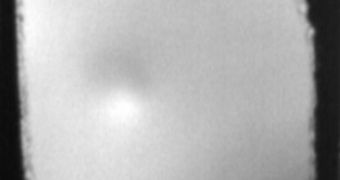For years, the international scientific community has believed that producing soap sheets is impossible, given the frailty of soap bubbles. But a team of experts has just proven the community wrong on this.
As everyone knows, soap bubbles are very frail and easy to destroy. They burst when they come in contact with most surfaces, such as for example clothes, fingers and so one.
While they are fun to watch and play with, they are very difficult to analyze in the lab, from the point of view of fluid dynamics experts.
These scientists have been trying to create flat soap bubble-like structures for many years, but thus far their investigations have failed, Technology Review reports.
But physicists at the University of California in Santa Barbara (UCSB) recently managed to create this very type of structure. Furthermore, they were able to create free-floating soap sheets as well.
This will enable a series of studies that have been impossible before. For example, analyzing the forces at work when a soap bubble bursts was a very complex task, due to the nature of the event.
Scientists used high-speed cameras to make sense of how soap films making the bubbles burst, and how they retract once they are punctured by something in their environment.
But the UCSB group wanted to push this type of investigations ever further. For instance, they wanted to analyze how a soap sheet retracts when only one of its edges is retracted.
This type of study was impossible until now because no one managed to obtain a perfectly straight rupture in the edge, due to the physics of the soap mixture.
But UCSB team leaders Hans Mayer and Rouslan Krechetnikov were able to move past this obstacle by creating a special device, which features a square frame.
The frame is dipped into a mixture containing 4% glycerol, sodium dodecyl sulfate, and water, which are the standard components for creating soap bubbles.
After it is removed, an electrical current is passed through one of the edges of the square, heating up the soap that is in contact with it, and allowing it to retract. The rupture point is perfectly straight.
Another cool application for the new device is when experts pass electricity through the entire frame, separating the soap film in its entirety, and allowing it to float.

 14 DAY TRIAL //
14 DAY TRIAL //